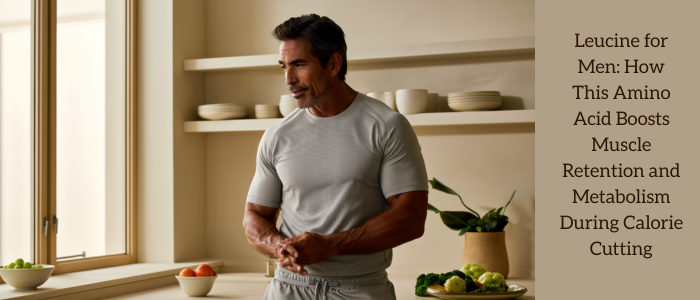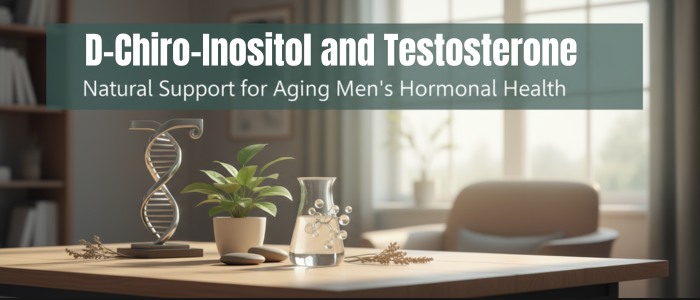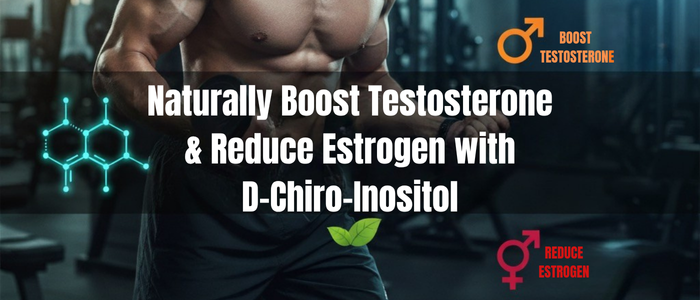


L Citrulline vs Citrulline Malate: Which is Better?
By: Robert A. Schinetsky
When you want to enhance performance and muscle growth, one of the most effective ways to accomplish that is through increasing nitric oxide production during training. Citrulline malate for endurance athletes is particularly beneficial in boosting nitric oxide levels, leading to improved performance.
Nitric oxide is a powerful signaling molecule in the body that encourages vasodilation (the widening or dilation of blood vessels). Widening of the blood vessels allows more blood flow to be delivered to your muscles, and with it is carried greater amounts of oxygen and essential nutrients. This leads to greater endurance, stamina, and overall performance as well as a pretty epic muscle pump.
Over the long term, you’ll also experience better muscle growth and quicker recovery.
As such, the supplement industry has sought for countless ways to boost nitric oxide over the years, in the hopes of uncovering the ultimate one-supplement solution for pumps, performance, and growth. By and large, most of these ingredients, such as l-arginine, have turned out to be altogether ineffective for increasing nitric oxide, performance or muscle growth. However, l citrulline benefits have been recognized in enhancing athlete performance enhancement by effectively supporting nitric oxide production.
However, emerging from the failures, frauds, and marketing ploys is an ingredient that has been shown to be extremely effective for increasing nitric oxide production and can be found in your favorite pre workout supplement.
That ingredient is Citrulline Malate.
What is Citrulline Malate?
If you’re a regular reader of our Articles section, you’ve seen us extoll about the wealth of benefits citrulline malate has to offer and why it’s considered one of the best pre workout ingredients around.
But, in case you’re not a regular reader, and/or new to the Advanced Molecular Labs family, here’s a brief recap on citrulline malate vs l citrulline:
L-Citrulline is a non-proteinogenic amino acid (meaning it’s not involved in the synthesis of proteins in the body) that plays a key role in the Urea Cycle, a physiological process that facilitates the removal of ammonia from the body.
Ammonia is a metabolic waste product generated from intense exercise that induces fatigue and can be toxic to the body if it builds up too much without clearance.[1,2] This ammonia-eliminating effect of citrulline is one of main reasons you experience reduced fatigue when supplementing with Citrulline malate prior to training.
The body can produce L-Citrulline through the breakdown of another conditionally essential amino acid, L-glutamine, or as a byproduct of L-arginine in the synthesis of nitric oxide. But, L-Citrulline can also be obtained through the diet, as it naturally found in a number of fruits, namely watermelon.
When citrulline does enter you body, your kidneys convert it to arginine, which your body uses as “fuel” to generate nitric oxide. The greater you can increase plasma arginine levels, the greater your nitric oxide output is, which leads to greater vasodilation, blood flow, performance, and pumps as well as enhanced removal of metabolic waste products generated from exercise.[5]
Now, let’s take a look at the other half of citrulline malate — malic acid.
Malic acid is another organic compound naturally occurring in a number of fruits, but is particularly abundant in apples. As a weak acid, malic acid is typically used as a preservative in packaged goods in order to prevent spoilage. But, it has also been document to improve stamina and reduce pain induced by intensive training bouts.[3]
Malic acid enhances aerobic and anaerobic energy production as it serves an essential role in the Krebs cycle (citric acid cycle or TCA cycle). The Krebs cycle is responsible for converting the food we ingest into useable energy, specifically the generation of ATP, the cellular “currency” of exercise.[4]
Citrulline Malate or L-Citrulline?
There’s been a bit of an l citrulline vs citrulline malate “battle” going on in the pre-workout industry as of late, with some proclaiming the superiority of the two ingredients. So, what’s the difference between the two, if any?
When L-Citrulline is added to a pre workout supplement, it is solely the amino acid. There is no malate component to it, as you would get if you were supplementing with citrulline malate. Some believe that the pure amino acid is superior to citrulline malate in terms of effectiveness, but what does actual human research say?
Well, that’s where things get interesting.
To date, there haven’t been any human studies comparing the two ingredients head-to-head regarding exercise performance, but based on the studies conducted to date in humans investigating the two ingredients individually, it would appear that L-Citrulline tends to be a better option for aerobic or endurance exercise (i.e. “cardio) than anaerobic exercise (resistance training).[6,7]
Interestingly enough, supplementing with L-Citrulline may not be beneficial at all, as several studies have found that when subjects consume L-citrulline prior to exercise, they experience no significant improvement in performance, highlighting the importance of choosing the right endurance supplements. This raises the question of citrulline vs citrulline malate in terms of effectiveness.
The first study involved men running to exhaustion on a treadmill.[8] Subjects were given 3 grams of l-citrulline three hours before exercising or 9 grams over the course of the day preceding the run. In both instances, not only did men fail to show any improvement in performance. In some cases, the men actually had a decrease in performance in their treadmill running time
Another study investigating the benefits of citrulline use university athletes and gave them one of the following one or two hours prior to exercise[9]:
- Watermelon juice (containing approximately 1 grams of l-citrulline)
- 6 grams of L-citrulline mixed into a drink with approximately 53 grams of sucrose (table sugar)
- Sucrose (placebo)
Athletes were to perform the bench press and then running to exhaustion. Researchers noted that supplementation with either watermelon juice or citrulline conferred no significant benefit to the subjects regarding total number of repetitions, time to exhaustion, VO2max or anaerobic threshold.[9]
And, on top of that, blood flow was also unchanged by either source of l-citrulline, indicating that there may have been no improvement in nitric oxide production or vasodilation.
Finally, there’s a study involving eight healthy, recreationally-active men who consumed 300 mL per day of watermelon juice concentrate (containing 3.4 grams of L-Citrulline) for two weeks. Researchers wanted to see if consuming the concentrate would improve nitric oxide bioavailability and exercise performance in moderate- and severe-intensity exercise.
At the end of the two weeks, there was no significant improvement in time-to-exhaustion during severe-intensity exercise, and it actually increased blood pressure in the men, rather than decrease it.[9] These results further underscore that fact that L-citrulline can be considered marginally effective at best for moderate, steady-state intensity exercise, but for high-intensity work, such as sprints or resistance-training, it’s a poor choice.
So, what about citrulline malate?
Well, when subjects consume 8 grams of citrulline malate pre workout, studies have shown significant improvements in both leg and chest resistance training.[10,11,12] More specifically, individuals consuming 8 grams of citrulline malate (the exact same dose on AML Pre Workout) prior to exercising the performed a higher number of repetitions and had experienced a reduced rate of perceived exertion (RPE) versus subjects consuming a placebo.
Additionally, studies with subjects consuming 8 grams of citrulline malate also experience as much as a 40% reduction in muscle soreness compared to athletes not using citrulline malate at 24 hours and 48 hours post training.[12]
In other words, if you want to increase your bench and squat numbers (and who out there among us doesn’t?), and feel less sore after working out, you want to supplement with citrulline malate. The debate of citrulline malate vs l-citrulline often comes down to the specific benefits each provides in different exercise contexts.
And, make sure to use the 8 gram dose, not the 4 or 6 gram dose that some companies try to pass off as the effective dose. This ensures you are getting the full citrulline malate benefits that are essential for maximizing workout supplements effectiveness.
Citrulline malate at 8 grams pre workout has been repeatedly shown to improve performance in weight lifting in resistance-trained individuals. The same can’t be said for that of L-Citrulline.
Why the discrepancy?
Researchers have yet to isolate the exact reason for the discrepancy between the two, but it may be have something to do with the effects of malic acid in the Krebs Cycle. If you remember up top, we discussed that malic acid serves as an intermediary in the krebs cycle.
Why is this important?
Well, the krebs (or TCA) cycle generates ATP, the form of energy used by your muscles during high intensity exercise, such as sprinting, jumping, or weight lifting.
With a more ample supply of malic acid, in effect, the TCA cycle may be able to regenerate ATP more rapidly[13], which improves exercise performance and reduces recovery time between sets and following intense training. This may be the reason that citrulline malate is more effective than l-citrulline when it comes to strength training performance, offering a superior option for athlete performance enhancement.
Citrulline Malate — The Choice for Real Athletes
When you’re looking to maximize your performance in the weight room or on the field of competition and trying to decide between citrulline malate or l-citrulline, the choice is clear — choose citrulline malate every time.
Citrulline Malate is the only form of citrulline shown to be beneficial for anaerobic exercise, and the form you want if you’re performing high intensity exercise.
That’s why we’ve included the full 8 gram clinically-verified dose of citrulline malate in every serving of AML Pre Workout. Other pre workouts try to skate by with lower doses of citrulline malate, yet make claims and cite research that clearly states 8 grams is the amount needed to maximize performance.
Not us.
We believe in doing our best to help you perform your best. And in the case of citrulline malate versus l-citrulline, that means choosing citrulline malate everytime!
As an added bonus, we’ve also included 800mcg of folic acid to further improve the effectiveness of citrulline malate.
You see, folic acid functions as a cofactor for the enzyme dihydrofolate reductase, which synthesizes BH4 (tetrahydrobiopterin). BH4 itself is an essential cofactor for the synthesis of nitric oxide.[14]
Basically, supplementing with folic acid increases the underlying compounds that support nitric oxide synthase and increase in nitric oxide, much like citrulline malate increases the primary “fuel” that supports nitric oxide production (arginine).
By combining folic acid with citrulline malate, we’ve created a 1-2 punch for strong, unyielding nitric oxide production that supports maximum pumps and performance!
It’s little differences like this that separate AML supplements from the droves of other overpriced, underdosed products on the market, and why we do everything in our power to bring you the best supplements on the market, period.
You deserve the best, and that means delivering superior quality products worthy of your hard-earned money.
That’s the AML difference!
Click here to grab your own bottle of AML Pre Workout and witness the power of a real pre workout supplement!
References
- Eriksson, L. S., Broberg, S., Bjorkman, O., & Wahren, J. (1985). Ammonia metabolism during exercise in man. Clinical Physiology (Oxford, England), 5(4), 325–336.
- Mutch, B. J., & Banister, E. W. (1983). Ammonia metabolism in exercise and fatigue: a review. Medicine and Science in Sports and Exercise, 15(1), 41–50.
- Werbach, M. (2000). “Nutritional strategies for treating chronic fatigue syndrome”. Alternative Medicine Review, 5(2), 93–108.
- Schroeder MA, Atherton HJ, Ball DR, et al. Real-time assessment of Krebs cycle metabolism using hyperpolarized 13C magnetic resonance spectroscopy. The FASEB Journal. 2009;23(8):2529-2538. doi:10.1096/fj.09-129171.
- Takeda, M. Machida, A. Kohara, N. Omi, T. Takemasa. Effects of citrulline supplementation on fatigue and exercise performance in mice. J. Nutr. Sci. Vitaminol. (Tokyo), 57 (3) (2011), pp. 246-250.
- Suzuki T, Morita M, Kobayashi Y, Kamimura A. Oral L-citrulline supplementation enhances cycling time trial performance in healthy trained men: Double-blind randomized placebo-controlled 2-way crossover study. Journal of the International Society of Sports Nutrition. 2016;13:6. doi:10.1186/s12970-016-0117-z.
- Bailey, S. J., Blackwell, J. R., Lord, T., Vanhatalo, A., Winyard, P. G., & Jones, A. M. (2015). l-Citrulline supplementation improves O2 uptake kinetics and high-intensity exercise performance in humans. Journal of Applied Physiology (Bethesda, Md. : 1985), 119(4), 385–395. https://doi.org/10.1152/japplphysiol.00192.2014
- Hickner, R. C., Tanner, C. J., Evans, C. A., Clark, P. D., Haddock, A., Fortune, C., … McCammon, M. (2006). L-citrulline reduces time to exhaustion and insulin response to a graded exercise test. Medicine and Science in Sports and Exercise, 38(4), 660–666. https://doi.org/10.1249/01.mss.0000210197.02576.da
- Cutrufello, P. T., Gadomski, S. J., & Zavorsky, G. S. (2015). The effect of l-citrulline and watermelon juice supplementation on anaerobic and aerobic exercise performance. Journal of Sports Sciences, 33(14), 1459–1466. https://doi.org/10.1080/02640414.2014.990495
- Wax, B., Kavazis, A. N., Weldon, K., & Sperlak, J. (2015). Effects of supplemental citrulline malate ingestion during repeated bouts of lower-body exercise in advanced weightlifters. Journal of Strength and Conditioning Research, 29(3), 786–792. https://doi.org/10.1519/JSC.0000000000000670
- Glenn, J. M., Gray, M., Wethington, L. N., Stone, M. S., Stewart, R. W. J., & Moyen, N. E. (2017). Acute citrulline malate supplementation improves upper- and lower-body submaximal weightlifting exercise performance in resistance-trained females. European Journal of Nutrition, 56(2), 775–784. https://doi.org/10.1007/s00394-015-1124-6
- Perez-Guisado, J., & Jakeman, P. M. (2010). Citrulline malate enhances athletic anaerobic performance and relieves muscle soreness. Journal of Strength and Conditioning Research, 24(5), 1215–1222. https://doi.org/10.1519/JSC.0b013e3181cb28e0
- https://nutritionreview.org/2013/04/krebs-cycle-intermediates/
- Crabtree MJ, Hale AB, Channon KM. Dihydrofolate reductase protects endothelial nitric oxide synthase from uncoupling in tetrahydrobiopterin deficiency. Free Radical Biology & Medicine. 2011;50(11):1639-1646. doi:10.1016/j.freeradbiomed.2011.03.010.






